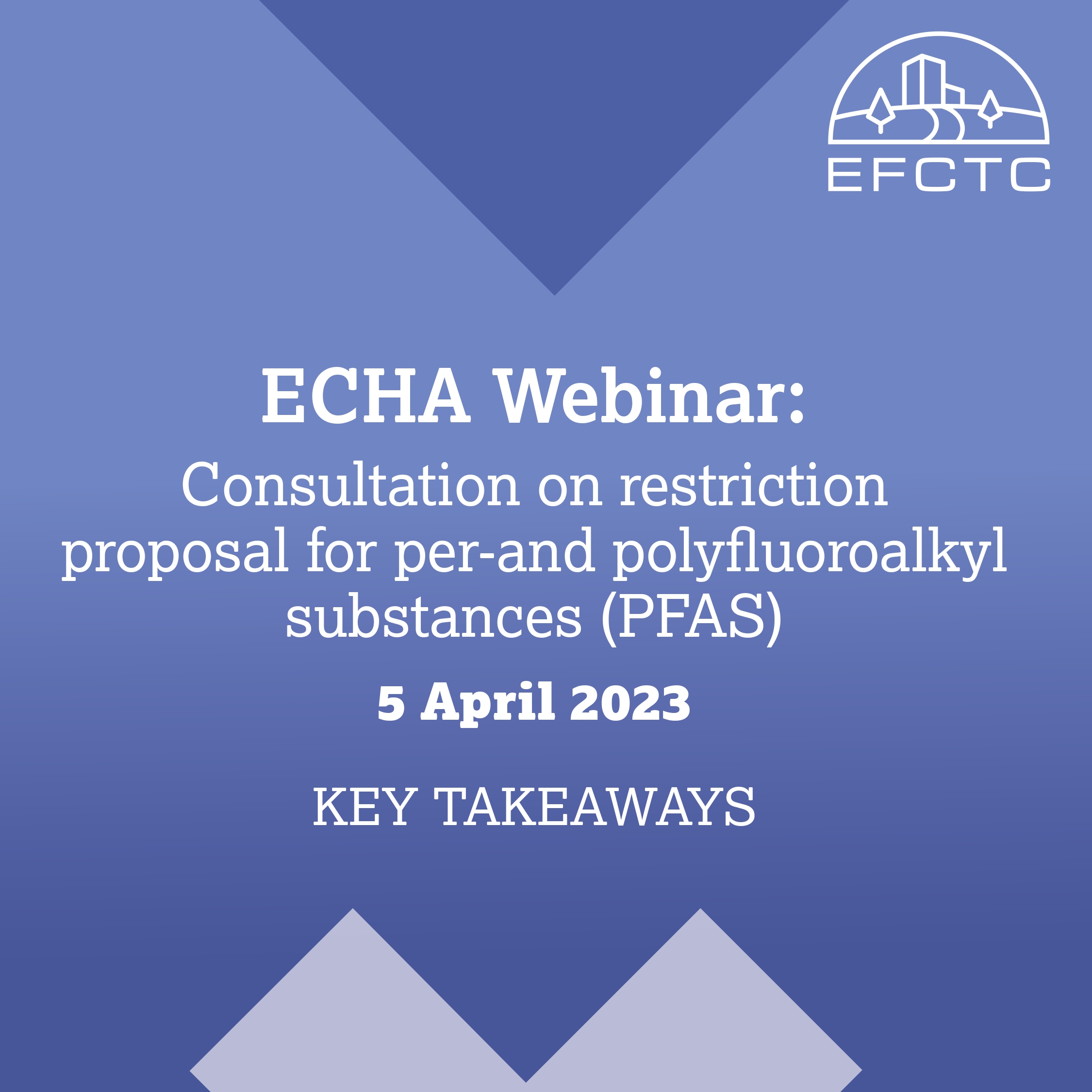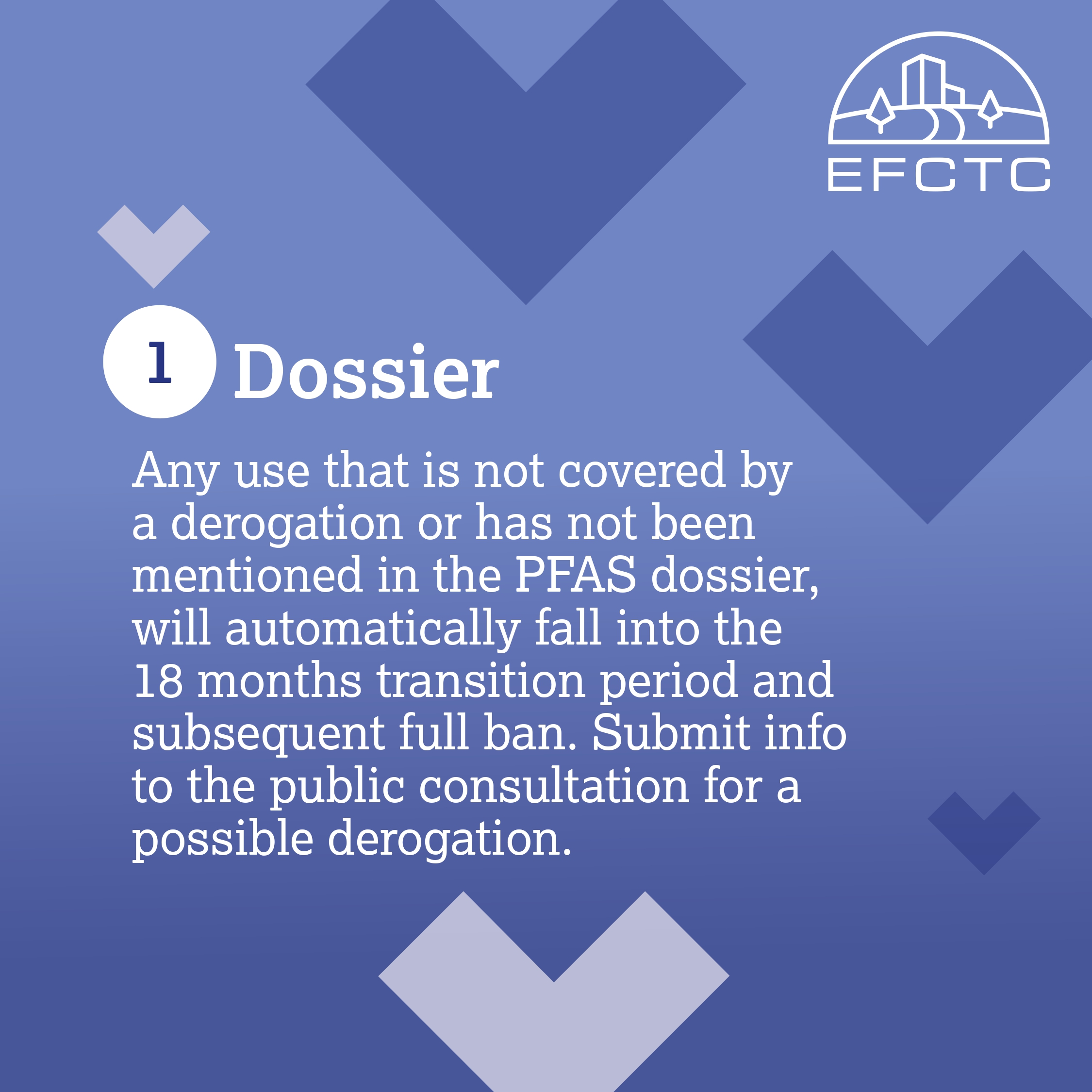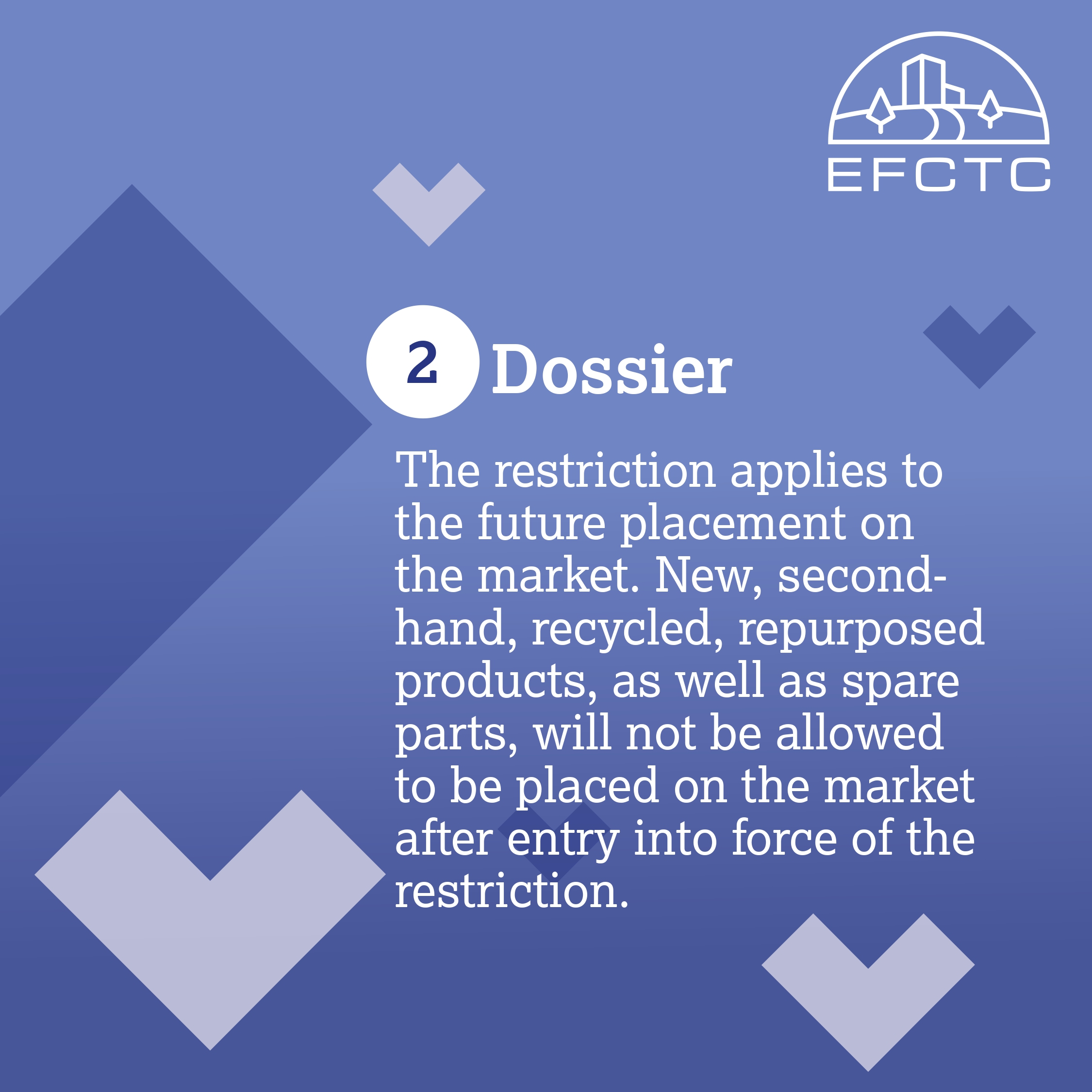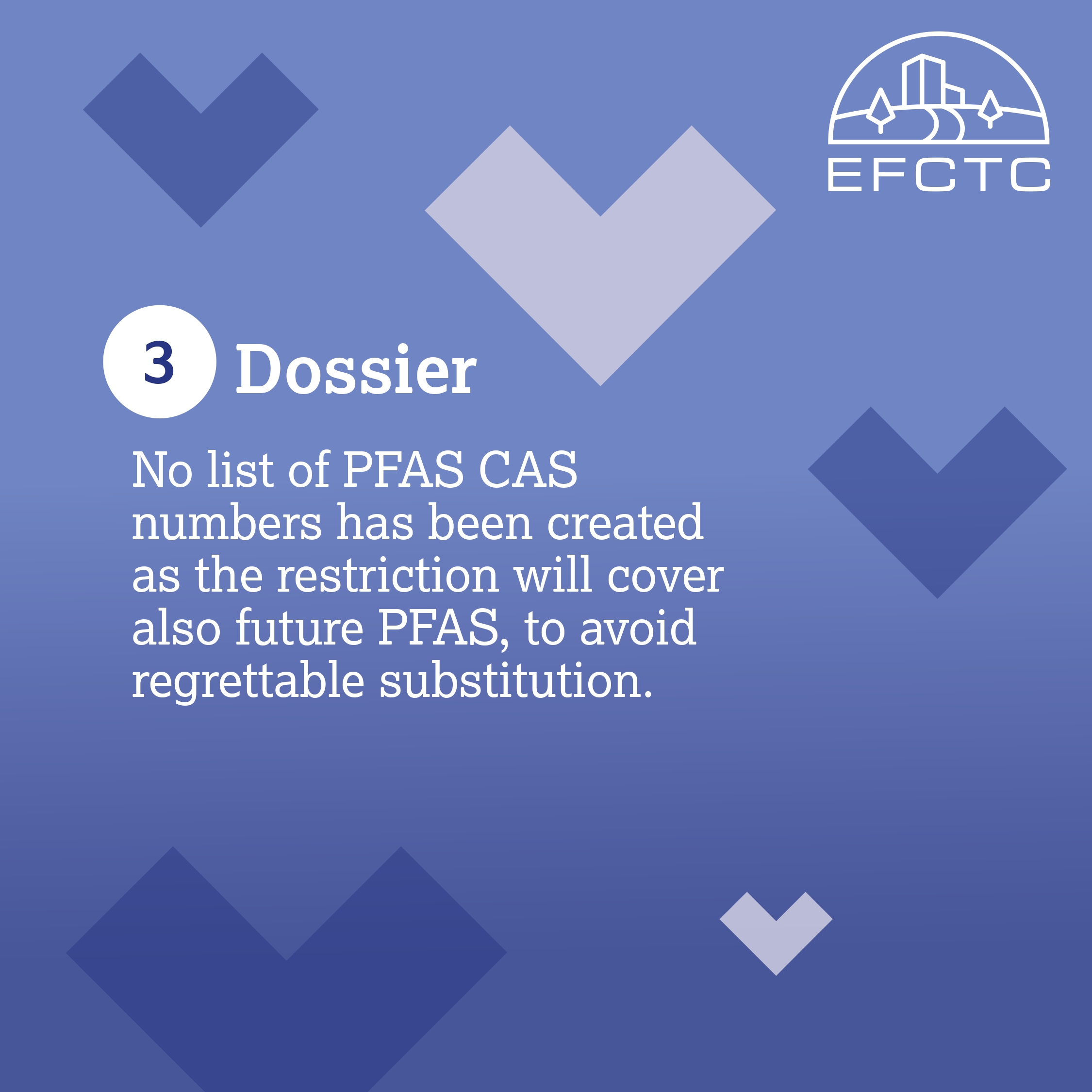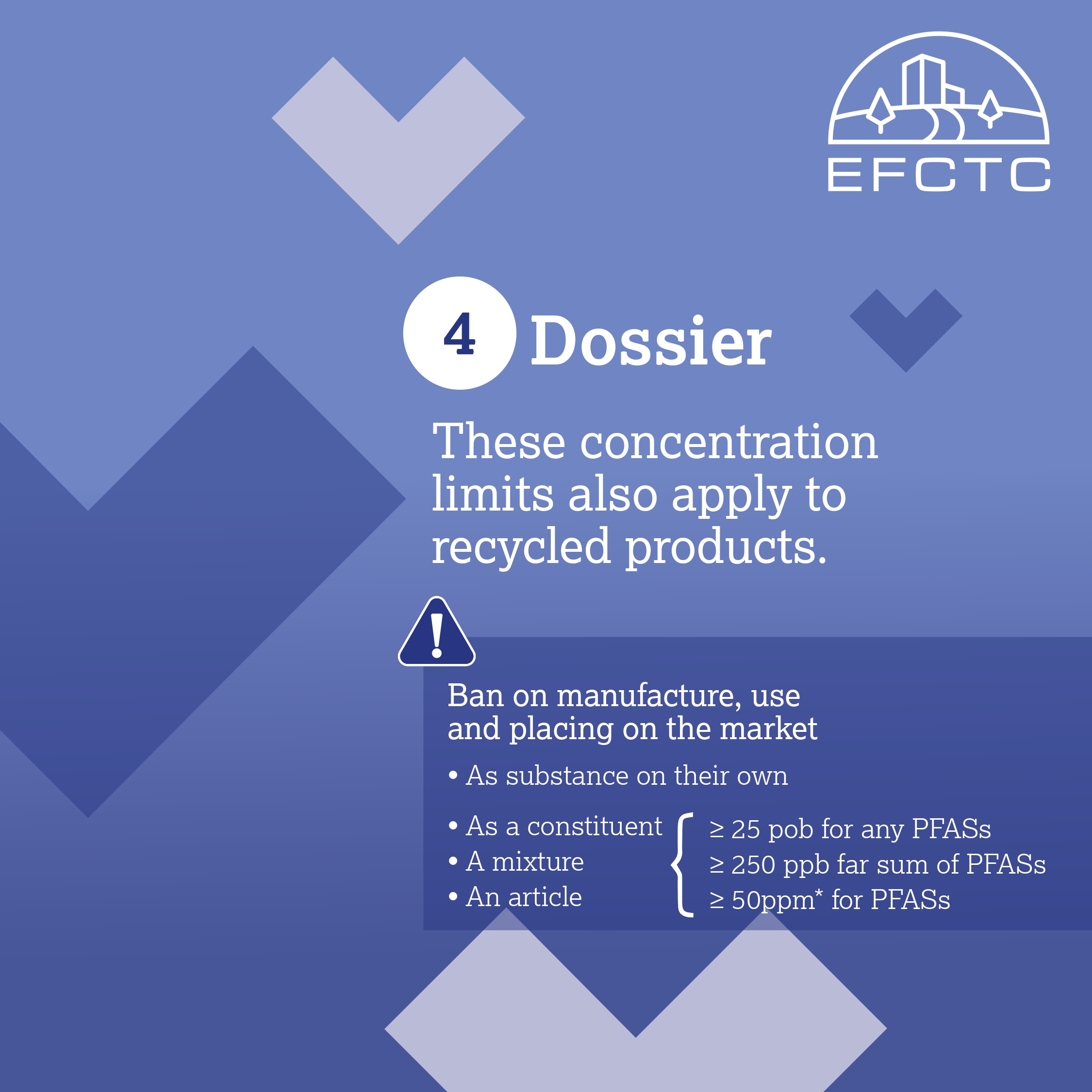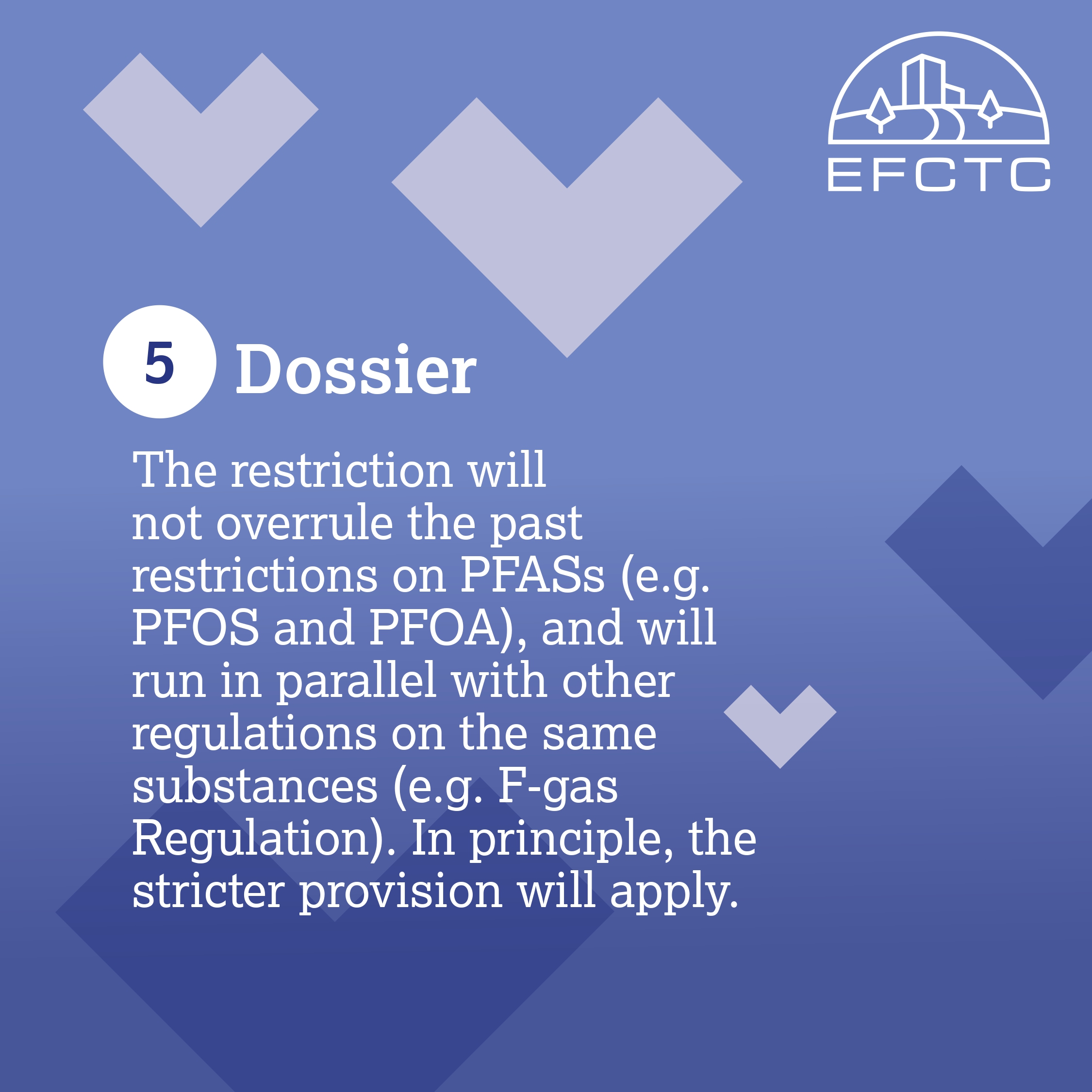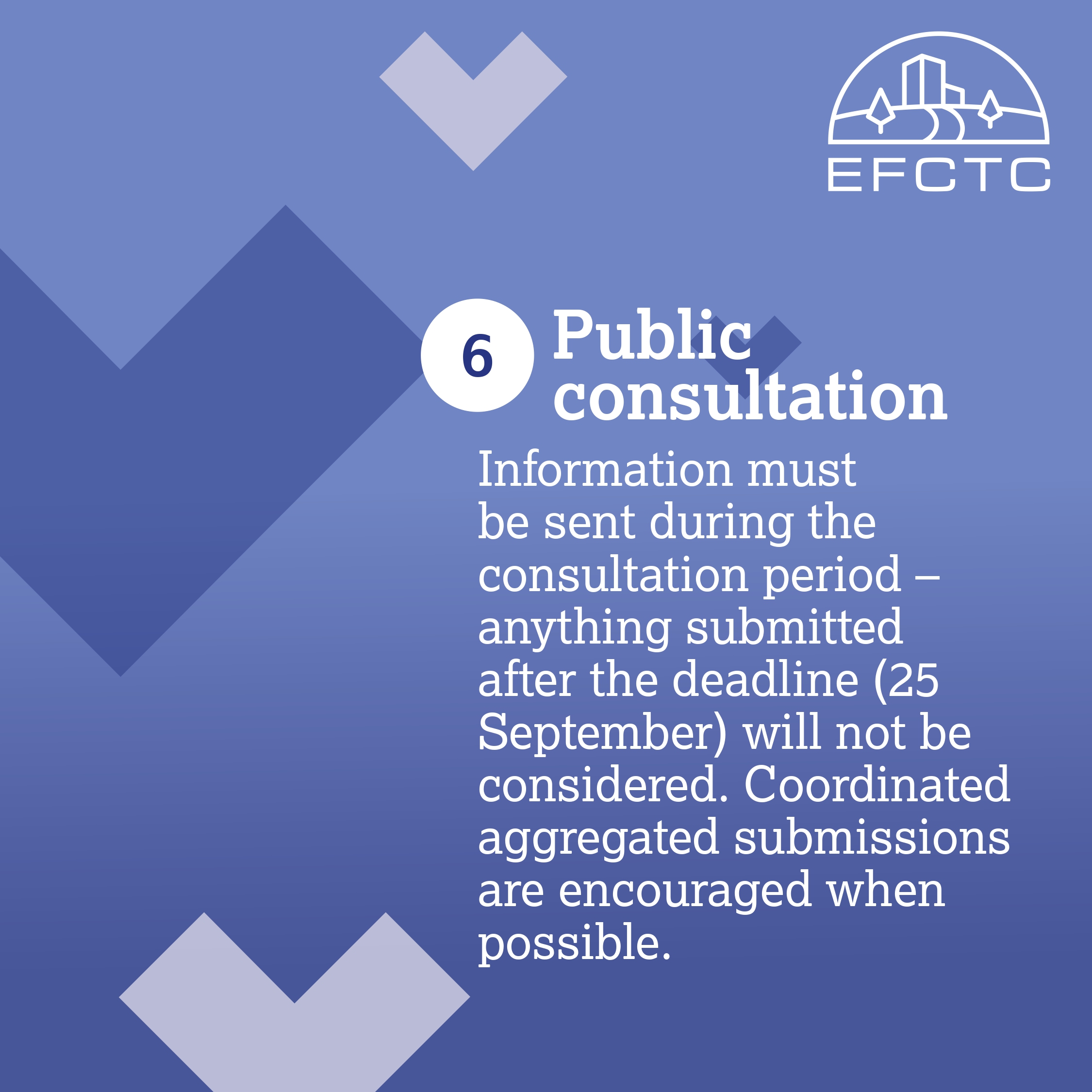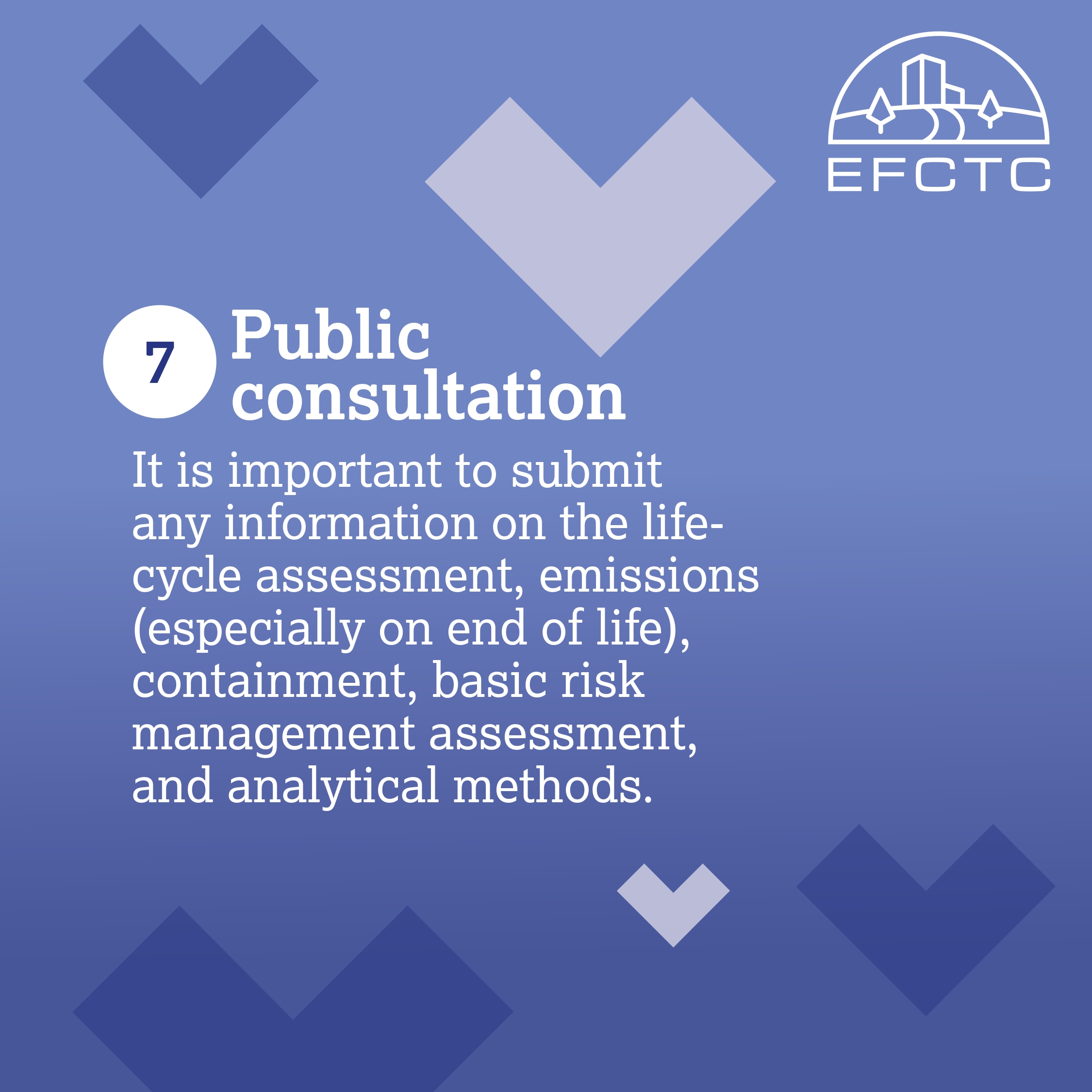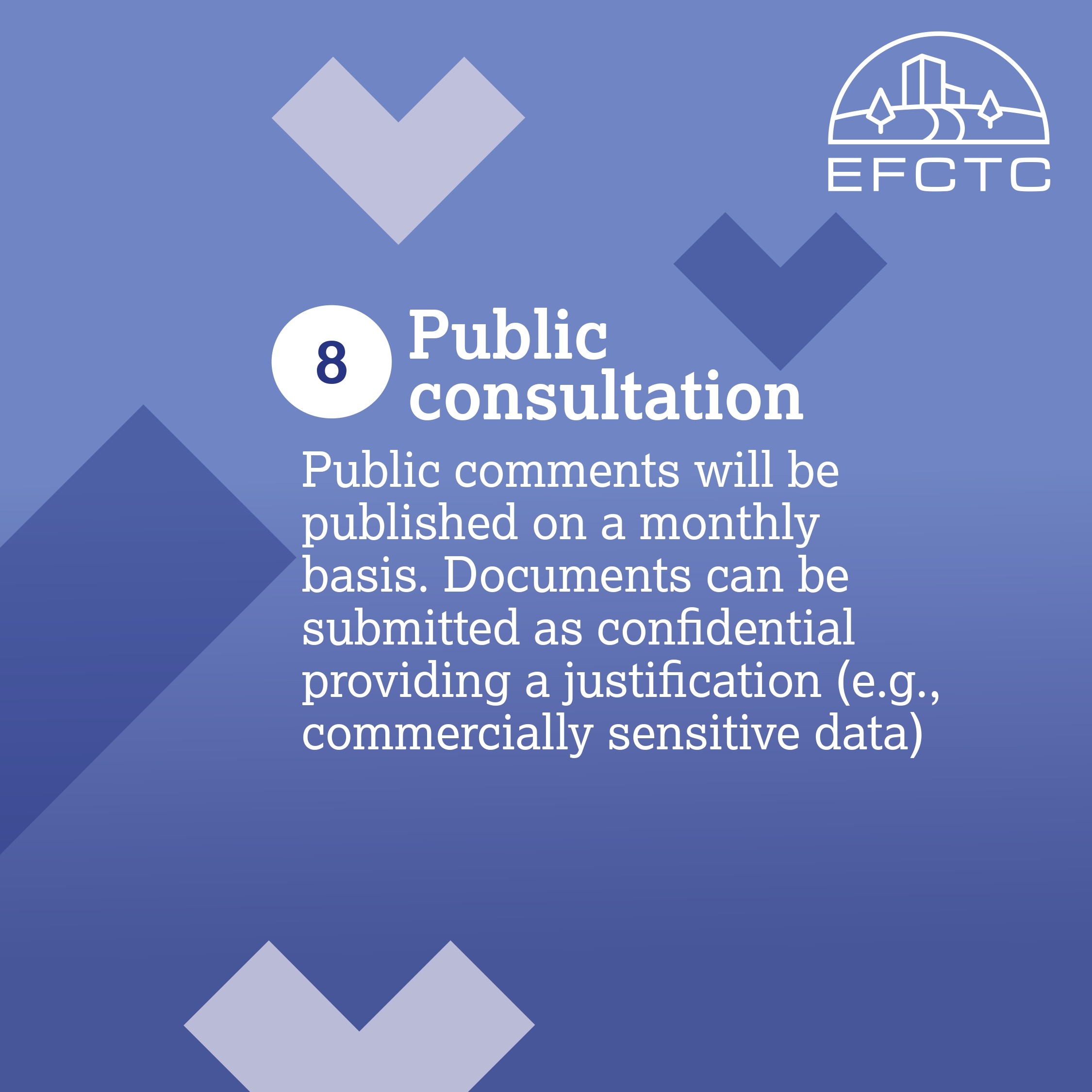F-gases in the PFAS restriction file
News and latest developments
7 February 2023: ECHA pre-published restriction documents
On February 7th, the European Chemicals Agency (ECHA) pre-published the dossier for the proposal of the restiction of PFAS.
The dossier was submitted on January 13th, by the authorities of Denmark, Germany, Norway, Sweden, and The Netherlands.
On March 22nd, ECHA opened a public consultation to collect information from all interested parties: this is your chance to make your voice heard!
ECHA will be looking for information about chemical properties of PFAS as well as on the socioeconomic impact of a possible restriction (more information: ECHA website).
Find the EFCTC’s press release on the publication here.
5 April 2023: ECHA online info session on PFAS
On April 5th, the European Chemicals Agency held an online info session on the proposed universal restriction on PFAS to explain the restriction process and help those interested in participating in the upcoming public consultation.
More information is available on the ECHA website.
What to know about PFAS
HFCs, HFOs and HCFOs are a distinct subset and due to their properties are not commonly regarded as PFAS.
Per- and polyfluoroalkyl substances, PFAS, covers a broad range of substances that according to currently accepted terminology contain at least one perfluoralkyl group.
The five authorities of Denmark, Germany, Norway, Sweden, and The Netherlands have relied on the OECD’s definition on PFAS to define the scope of the proposed restriction, which covers approximately 10 000 substances.
The pre-published proposal defines the group as:

What about HFCs, HFOs and HCFOs?
HFCs, HFOs and HCFOs are not commonly regarded as PFAS, as they break down in the atmosphere to substances that naturally occur in the environment. They have a defined atmospheric lifetime, measured in days or months for HFOs and HCFOs, and years or decades for HFCs.
HFCs, HFOs and HCFOs are short chain substances (≤ C5 chains) and are not considered to be persistent, bioaccumulative or toxic substances, as defined in REACH Regulation Annex XIII.
They are gases, or low boiling point liquids that, if released to the environment, will rapidly volatilize and enter almost exclusively into the atmosphere, and are rarely found in bodies of water, ecosystems, or soil.
Their breakdown mechanisms in the atmosphere are generally known (see table for detailed breakdown products and source references which is available here). Their final degradation products are all substances that are believed to have occurred naturally in the environment for millions of years.
The REACH restriction process
REACH (Registration, Evaluation, Authorisation and Restriction of Chemicals, EU REG 1907/2006) is an EU regulation aiming at improving the protection of human health and the environment from the risks that can be posed by chemicals, while enhancing the competitiveness of the EU chemicals industry.
In principle, it applies to all chemical substances and therefore it has an impact on most companies across the EU.
Through the restriction process, it is possible to limit or ban the manufacture, placing on the market (including imports) or use of a substance or a group of substances.
The process for restrictions is quite long and it usually involves several players such as EU Member States, the European Chemicals Agency, and the European Commission.
Possible impact of the restriction on F-gases sector
An EU-wide ban (on the manufacture, placing on the market – including imports – or use of a substance) of the F-gases that fall into the OECD definition of PFAS would obviously result in a significant reduction in the availability and possible uses of these substances in the EU. An immediate ban could result in a scarcity of fluorinated refrigerants fluids to service and maintain the existing equipment on the market.
Moreover, the PFAS restriction could impact the components of the devices, resulting in further research needed to test and ensure safety of the new and PFAS-free components for devices using any kind of refrigerant fluids such as heat pumps, air-conditioning (including mobile), medical devices.
Hundreds of millions of systems could become obsolete under a PFAS restriction, as these systems can not readily be retrofitted with the non-PFAS refrigerants, causing an increase in production of waste. A more pragmatic approach that may be considered would be to allow continued use of existing equipment until its normal end of life, this would require a derogation to allow continued use of virgin and reclaimed F-gases to service this existing equipment for years possibly even decades.
EFCTC will carefully analise the proposal documents to ensure that the information on the F-gas sector is correct. EFCTC remains available to support the downstream users in their work on the restriction and encourages them to contribute to the public consultation by submitting information and data.
What is EFCTC doing?
2022
Socio Economic Analysis (SEA)
on the value of F-gases
2023
Regulatory Management Options Analysis (RMOA)
on 8 F-gases
Check that information in the proposal is correct and provides an accurate overview of your sector.
Provide any additional information to correct possible inaccurate statements.
Verify the feasibility of the proposal based on your knowledge of the sector.
Reach out to EFCTC if you have questions or would like to receive support in your work on the restriction.
